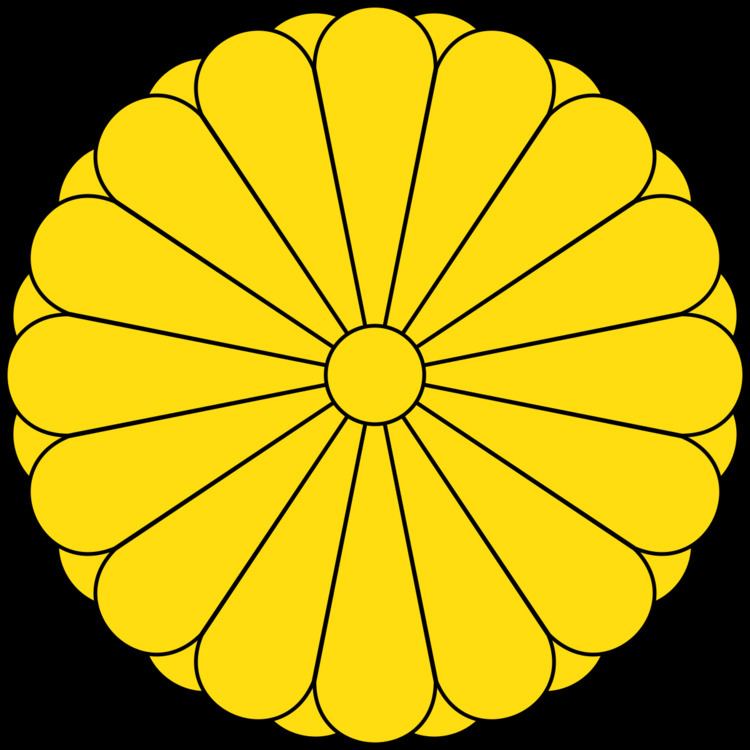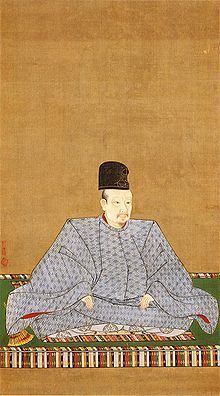Coronation December 15, 1586 Role Sovereign Children Emperor Go-Mizunoo | Predecessor Ogimachi Name Emperor Go-Yozei Parents Prince Masahito Siblings Prince Hachijo Toshihito | |
 | ||
Spouse Fujiwara no (Konoe) Sakiko(Chuwa-mon in) Issue Imperial Prince KatahitoPrincess ShokoPrincely Priest ShokaiRyutoin-no-miyaImperial Princess SeishiPrincess BunkoImperial Prince KotohitoPrincess Son\'eiKonoe NobuhiroPrince ToshiatsuImperial Prince TsuneyoshiImperial Prince YoshihitoPrincely Priest RyojunIchijo AkiyoshiImperial Princess TeishiPrince MorochikaPrincess EishuKo\'un\'in-no-miyaRei\'un\'in-no-miyaPrincely Priest DokoKukain-no-miyaPrincely Priest DoshuPrincess SonseiPrincess Son\'renPrincely Priest Ji\'in Died September 25, 1617, Kyoto, Kyoto Prefecture, Japan Grandchildren Empress Meisho, Emperor Reigen, Emperor Go-Sai, Emperor Go-Komyo Similar People Emperor Reigen, Emperor Jimmu, Tokugawa Hidetada, Kakuei Tanaka, Hirohito | ||
Emperor Go-Yōzei (後陽成天皇, Go-Yōzei-tennō, December 31, 1571 – September 25, 1617) was the 107th Emperor of Japan, according to the traditional order of succession.
Contents

Go-Yōzei's reign spanned the years from 1586 through 1611, corresponding to the transition between the Azuchi–Momoyama period and the Edo period.
This 16th-century sovereign was named after the 9th-century Emperor Yōzei, and go- (後), translates as later, and thus, he could be called the "Later Emperor Yōzei". The Japanese word go has also been translated to mean the second one, and in some older sources, this emperor may be identified as "Yōzei, the second", or as "Yōzei II".
Genealogy
Before Go-Yōzei's ascension to the Chrysanthemum Throne, his personal name (imina) was Katahito (周仁).
He was the eldest son of Prince Masahito (誠仁親王, Masahito-shinnō, 1552–1586), also known as Prince Sanehito and posthumously named Yōkwōin daijō-tennō, who was the eldest son of Emperor Ōgimachi. His mother was a lady-in-waiting.
Go-Yōzei's Imperial family lived with him in the Dairi of the Heian Palace. The family included at least 35 children:
Events of Go-Yōzei's life
Prince Katahito became emperor when his grandfather abdicated. The succession (senso) was considered to have been received by the new monarch; and shortly thereafter, Emperor Go-Yōzei is said to have acceded (sokui). The events during his lifetime shed some light on his reign. The years of Go-Yōzei's reign correspond with the start of the Tokugawa shogunate under the leadership of Tokugawa Ieyasu and Tokugawa Hidetada.
Legacy
Go-Yōzei's reign corresponds to the rule of Toyotomi Hideyoshi and the beginning of the Edo Bakufu. He was the sovereign who confirmed the legitimacy of their accession to power; and this period allowed the Imperial Family to recover a small portion of its diminished powers.
This Emperor gave Toyotomi Hideyoshi the rank of Taikō, originally a title given to the father of the emperor's chief advisor (Kampaku), or a retired Kampaku, which was essential to increase his status and effectively stabilize his power.
When Tokugawa Ieyasu was given the title of Seii Taishōgun, the future of any anticipated Tokugawa shogunate was by no means assured, nor was his relationship to the emperor at all settled. He gradually began to interfere in the affairs of the Imperial Court. The right to grant ranks of court nobility and change the era became a concern of the bakufu. However, the Imperial Court's poverty during the Warring States Era seemed likely to become a thing of the past, as the bakufu provided steadily for its financial needs.
Go-Yōzei did abdicate in favor of his third son; but he wanted to be succeeded by his younger brother, Imperial Prince Hachijō-no-miya Toshihito (八条宮智仁親王) (first of the Hachijō-no-miya line, later called Katsura-no-miya), who built the Katsura Imperial Villa.
Go-Yōzei loved literature and art. He published the Kobun Kokyo and part of Nihon Shoki with movable type dedicated to the emperor by Toyotomi Hideyoshi.
After abdication, Go-Yōzei lived for six years in the Sentō Imperial Palace; and thereafter, it became the usual place to which abdicated emperors would retire. The name of this palace and its gardens was Sentō-goshō; and emperors who had abdicated were sometimes called Sentō-goshō.
The kami of Emperor Go-Yōzei is enshrined with other emperors at the imperial mausoleum (misasagi) called Fukakusa no kita no misasagi (深草北陵) in Fushimi-ku, Kyoto.
Kugyō
Kugyō (公卿) is a collective term for the very few most powerful men attached to the court of the Emperor of Japan in pre-Meiji eras. Even during those years in which the court's actual influence outside the palace walls was minimal, the hierarchic organization persisted.
In general, this elite group included only three to four men at a time. These were hereditary courtiers whose experience and background would have brought them to the pinnacle of a life's career. During Go-Yōzei's reign, this apex of the Daijō-kan included:
Eras of Go-Yōzei's reign
The years of Go-Yōzei's reign are more specifically identified by more than one era name or nengō.
